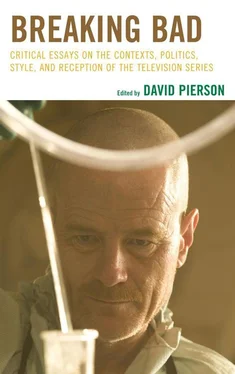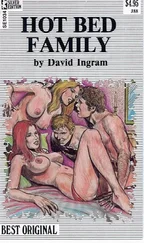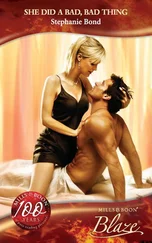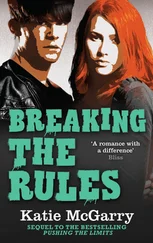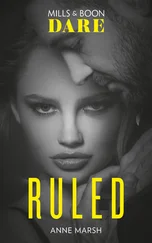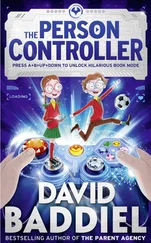THE AUTEUR’S MANIPULATION OF TIME
It is apparent that our cultural obsession with time has bled into the characters and thematic elements of Breaking Bad . Moreover, it is apparent that Gilligan plays with time as a narrative device throughout the series. To begin, television (and film) might be the perfect medium in which to examine the push-pull of time, particularly, if we consider J. M. E. McTaggart’s argument that there is no such thing as time. Rather, that there are only two descriptions of time: the A-Series and the B-Series (Gallagher, 1998, 112). The A-Series consists of what we consider past, present, and future in a historical time line: World War II happened in the past; I am typing a paper in the present; January 17, 2124 will occur in the future. The B-Series is our recognition of events that happen earlier, currently, and later: earlier, I brushed my teeth; now, I am typing a paper; later, I will eat dinner. Breaking Bad and other television shows follow these series to construct their narratives. The narrative of each episode is comprised of events that happen earlier (the beginning of the episode) and later (the end of the episode). At the same time, Breaking Bad , through flashbacks or flash-forwards that begin each episode, simultaneously manipulates our perception of time and injects moments that constituted the past, present, or future. As Spencer Shaw (2008) suggests , “Our sense of immanence and consciousness is intrinsically bound up with the continuity of objects, in the continuum of experience” (82). Simply put, our awareness and interaction with the present narrative derives from our previous experiences with past narratives. This might seem obvious, but Gilligan throws off this continuum by offering glimpses of moments that infect the narrative that has been established through the preceding episodes (A-Series) as well as what we will see during the current episode (B-Series). The inclusion of these brief snippets of past and future are not simply to keep us on the hook, but to create an uncanny recognition of our viewing past within the series. In a sense, Gilligan is playing with our memories of events much in the same way that Walt’s memories play with his perception of the present.
Often, moments resemble other moments but don’t repeat them. As Deleuze (1994) notes, “repetition is never a historical fact, but rather the historical condition under which something new is effectively produced” (90). Gilligan carefully treads within this hypothesis in his recurrent use of similar images without copying an introduction or closing to each episode. At times these images are subtle like the echoing of Jesse’s “45 days sober coin” that hangs from his mirror with the “Fighting Terrorism Since 1492” tag that hangs from the police officer’s rearview mirror in the same season. [12] This image occurs in the episode “Caballo sin Nombre” (3/28/10).
Both of these images speak to the aforementioned unfulfilled steps (Jesse is continues to battle sobriety/the police force continues to battle terrorism), but they also signify the convergence of past, present, and future.
At other times, episodes begin with the half-charred face of a pink teddy bear and an eye. In “Seven Thirty-Seven” (3/8/09), “Over” (5/10/09), and “ABQ,” all offer a version of this imagery, suggesting, in the presence of the eye, that someone is always watching, a foreboding notion that comes to fruition with the ubiquitous presence of cameras in Walt’s super-lab. But the half-charred face amidst the absence of the pink teddy bear’s eye creepily foreshadows the demise of Gus Fring in “Face Off” (10/9/2011). Like the pink teddy bear, Gus appears whole and nearly unharmed until the camera captures the right side of his face and sees its skeletal remains before he collapses in a heap. This image appears one more time in “Live Free or Die” (7/15/12) as Walt sits at a diner counter and arranges strips of bacon into the number 52. Although this conveys a lapse in time (a little over one year since the events of season four and two years from the beginning of the series), the iconography is similar to that of a skull, with an over-easy egg creating an eye on the left and a mass of food erasing the eye on the right, much like the last time we encountered Fring. Unlike the thirty-second recap that reminds us of important events from the previous episodes, these uncanny images remind us of moments within the series without blatantly making us relive them. Perhaps they were important, or perhaps they conjure previously seen characters. Regardless, they trap us—much like the characters—in a circuit of time in which the past is impossible to escape as it persists in the iconographies of the present and will continue to resurface in the future.
It seems that the most blatant use of these flashbacks and flash-forwards is to confuse our judgment of characters within a season and a present episode. This leads to exciting twists and turns throughout the narrative, but it also brings us back to Henri Bergson, who, in a bit of a riff on the early twentieth-century practice of associationism in psychoanalysis, suggests “placed in the actual, it exhausts itself in vain attempts to discover in a realized and present state the mark of its past origin, to distinguish memory from perception, and to erect into a difference in kind that which it condemned in advance to be but a difference in magnitude” (loc. 22358). In other words, the process of seeking out one’s past exacerbates the moment for which the person searches. In turn, this leads us to wonder whether the “remembered sensation becomes more actual the more we dwell upon it” and whether “the memory of the pain, when it began, [was] really pain” (Bergson loc. 2358-2369). The significance here, in regard to Breaking Bad , centers mostly on Walt and the aforementioned anger and regret that impel him to become Heisenberg. The motives for this split identity have been discussed thoroughly, but the flashbacks employed throughout the series beg us to wonder about the accuracy of these snippets of memory: we are unsure why Walt left Gray Matter and can only speculate. We are unsure how Walt and Skyler became married: there’s a saccharine retelling of their initial courtship, but then a gap exists before we see Skyler pregnant with Walt Jr. Most importantly, these flashbacks only pepper Walt as an anti-hero and slightly occlude our view of him as the man diagnosed with cancer through the first three and a half seasons. His narcissism becomes more apparent toward the end of season four, but Fring is still framed mostly as the villain despite the fact that Walt poisoned Brock and brought his potential reckoning upon himself. Artistically, Gilligan uses these brief moments of memory and foreshadowing to create characters and storylines, but he also utilizes them in an effort to manipulate our judgments of characters and cast us deeper into the seemingly perpetual circuit of time and repetition.
Something as a final note here might be for us to question why we continue to watch the series. In a way, Gilligan has already exposed the finale. In “Negro y Azul” the time condensing musical introduction offers us images of a dead Heisenberg, donning the symbolic black cap that Walt recovers on his fifty-first birthday in “Fifty-One” (8/5/12). I’m not here to advocate Walt’s demise or his survival; rather, I find it interesting that the show itself is manipulating our sensibilities of time, giving us answers and then luring us to watch the preceding events. Much like the way 24 provides a clock to rile our curiosity that builds to the end of the series, Gilligan baits us with the inevitable and appears to be slowly elucidating the fall, combining, at once, our knowledge of the past, our viewing of the present, and our awareness of the future.
Читать дальше
